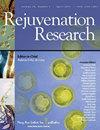衰老与细胞命运之间的联系:衰老相关分泌表型(SASP)及其对干细胞命运转变的影响。
IF 2.6
4区 医学
Q3 GERIATRICS & GERONTOLOGY
引用次数: 7
摘要
衰老是一种持久的细胞周期停滞的形式,引起对各种刺激的反应。衰老细胞保持代谢活性并分泌多种因子,统称为衰老相关分泌表型(SASP)。SASP是高度多效性的,可以影响许多生物过程,其中它既有有益的作用,也有有害的作用。SASP发挥其多效性影响的潜在机制在很大程度上仍然未知。SASP作为一种环境因子,调控干细胞分化并改变其常规。后者可以通过去分化、转分化或重编程来实现。当暴露于SASP时,细胞所经历的行为改变涉及几种与衰老相关的生理和病理现象。这些发现为确定可能的干预措施提供了线索,以减少有害影响而不干扰有益结果。在这里,我们讨论了SASP的多方面影响以及暴露于SASP因子后细胞状态发生的变化。本文章由计算机程序翻译,如有差异,请以英文原文为准。
Link between senescence and cell fate: Senescence-associated secretory phenotype (SASP) and its effects on stem cell fate transition.
Senescence is a form of durable cell cycle arrest elicited in response to a wide range of stimuli. Senescent cells remain metabolically active and secrete a variety of factors collectively termed senescence-associated secretory phenotype (SASP). SASP is highly pleiotropic and can impact numerous biological processes in which it has both beneficial and deleterious roles. The underlying mechanisms by which SASP exerts its pleiotropic influence remain largely unknown. SASP serves as an environmental factor, which regulates stem cell differentiation and alters its routine. The latter can potentially be accomplished through dedifferentiation, transdifferentiation, or reprogramming. Behavioral changes that cells undergo when exposed to SASP are involved in several senescence-associated physiological and pathological phenomena. These findings provide clues for identifying possible interventions to reduce the deleterious effects without interfering in the beneficial outcomes. Here, we discuss the multifaced effects of SASP and the changes occurring in cellular states upon exposure to SASP factors.
求助全文
通过发布文献求助,成功后即可免费获取论文全文。
去求助
来源期刊

Rejuvenation research
医学-老年医学
CiteScore
4.50
自引率
0.00%
发文量
41
审稿时长
3 months
期刊介绍:
Rejuvenation Research publishes cutting-edge, peer-reviewed research on rejuvenation therapies in the laboratory and the clinic. The Journal focuses on key explorations and advances that may ultimately contribute to slowing or reversing the aging process, and covers topics such as cardiovascular aging, DNA damage and repair, cloning, and cell immortalization and senescence.
Rejuvenation Research coverage includes:
Cell immortalization and senescence
Pluripotent stem cells
DNA damage/repair
Gene targeting, gene therapy, and genomics
Growth factors and nutrient supply/sensing
Immunosenescence
Comparative biology of aging
Tissue engineering
Late-life pathologies (cardiovascular, neurodegenerative and others)
Public policy and social context.
 求助内容:
求助内容: 应助结果提醒方式:
应助结果提醒方式:


